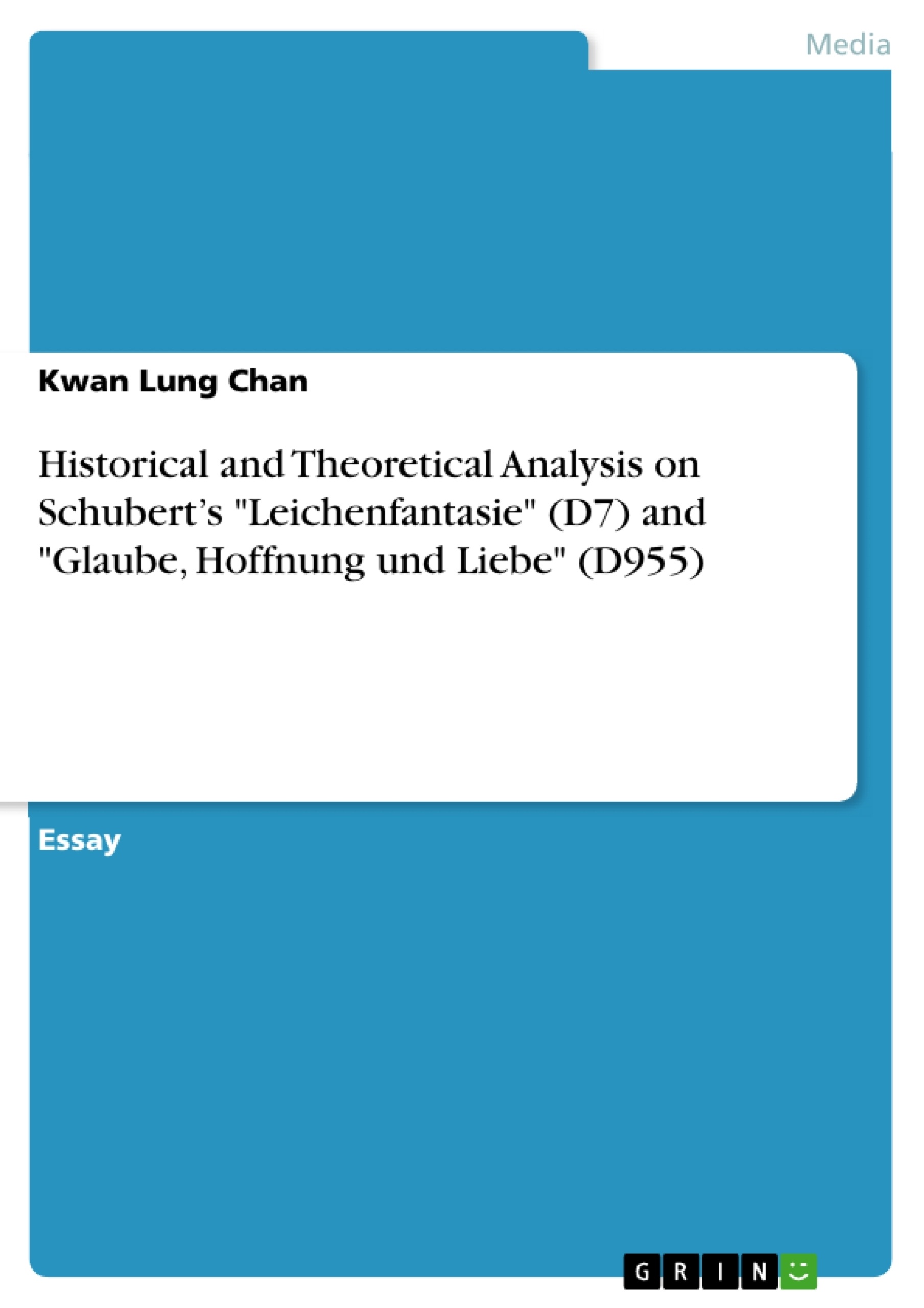Despite Schubert’s short life, the compositional style between his early years and later years have ample difference. This essay will compare the difference of compositional style between Leichenfantasie, D7, an early work of Schubert and Glaube, Hoffnung und Liebe, D955 (hereinbelow referred as D955) , a later work of Schubert, in terms of historical influences and theoretical analysis.
Inhaltsverzeichnis (Table of Contents)
- Introduction
- Historical Significance of Leichenfantasie
- Seminary encounter on Zumsteeg
- Early Lieden: Fatality as theme
- Historical Significance of Glaube, Hoffnung und Liebe, D955
- Attempt to gain financial support
- Syphilis and acute infectious diseases: simplified compositional style
- Cyclothymia: yearn for God's help
- Harmonic usage in Leichenfantasie
- Harmonic usage in Glaube, Hoffnung und Liebe, D955
- Comparison on harmonic usage in Leichenfantasie and Glaube, Hoffnung und Liebe, D955
Zielsetzung und Themenschwerpunkte (Objectives and Key Themes)
This essay analyzes the compositional differences between two of Schubert’s lieder, Leichenfantasie, D7 and Glaube, Hoffnung und Liebe, D955, in terms of historical context and theoretical analysis. The essay aims to demonstrate how Schubert’s compositional style evolved throughout his career. Key themes explored in the essay include:- The influence of historical events and personal experiences on Schubert's music.
- The use of harmonic techniques in Schubert's lieder.
- The role of death and hope in Schubert's music.
- Schubert's struggle with financial difficulties and health problems.
- Schubert's exploration of religious themes in his music.
Zusammenfassung der Kapitel (Chapter Summaries)
- **Introduction:** The essay introduces the topic of the comparison between Schubert's early lied Leichenfantasie, D7, and his later lied Glaube, Hoffnung und Liebe, D955. It discusses the essay's scope and aims.
- **Historical Significance of Leichenfantasie:** This section explores the historical context surrounding the composition of Leichenfantasie, D7, including Schubert’s seminary years and the influence of Johann Rudolf Zumsteeg’s works. It also discusses the theme of death in Schubert’s early lieder.
- **Historical Significance of Glaube, Hoffnung und Liebe, D955:** This section discusses the historical context surrounding the composition of Glaube, Hoffnung und Liebe, D955, including Schubert's financial struggles and health issues. It also examines the role of religious themes in the piece.
- **Harmonic usage in Leichenfantasie:** This section examines the use of harmonic techniques in Leichenfantasie, D7, focusing on the juxtaposition of major and minor triads and its effect on the listener.
- **Harmonic usage in Glaube, Hoffnung und Liebe, D955:** This section examines the use of harmonic techniques in Glaube, Hoffnung und Liebe, D955, focusing on the use of semitonal modification and augmented sixth chords.
- **Comparison on harmonic usage in Leichenfantasie and Glaube, Hoffnung und Liebe, D955:** This section compares and contrasts the harmonic techniques used in both lieder, suggesting that Schubert's knowledge and use of harmonic techniques evolved throughout his career.
Schlüsselwörter (Keywords)
Schubert, Lied, Leichenfantasie, D7, Glaube, Hoffnung und Liebe, D955, historical context, theoretical analysis, harmonic usage, death, hope, financial difficulties, health problems, religious themes, classical period, romantic period.
Excerpt out of 14 pages
- scroll top
- Quote paper
- Bachelor of Education (Music) Kwan Lung Chan (Author), 2016, Historical and Theoretical Analysis on Schubert’s "Leichenfantasie" (D7) and "Glaube, Hoffnung und Liebe" (D955), Munich, GRIN Verlag, https://www.grin.com/document/448148
Look inside the ebook



